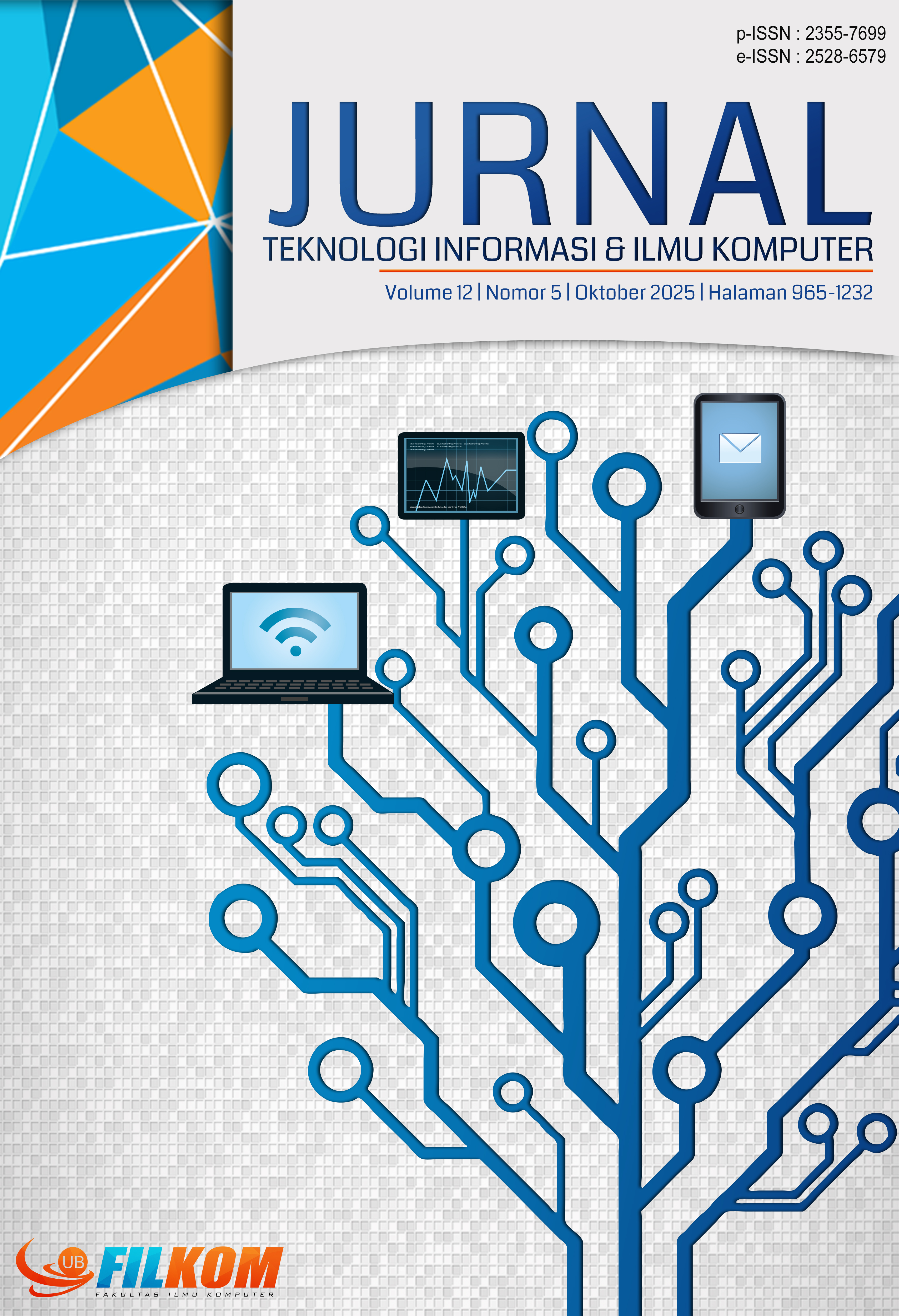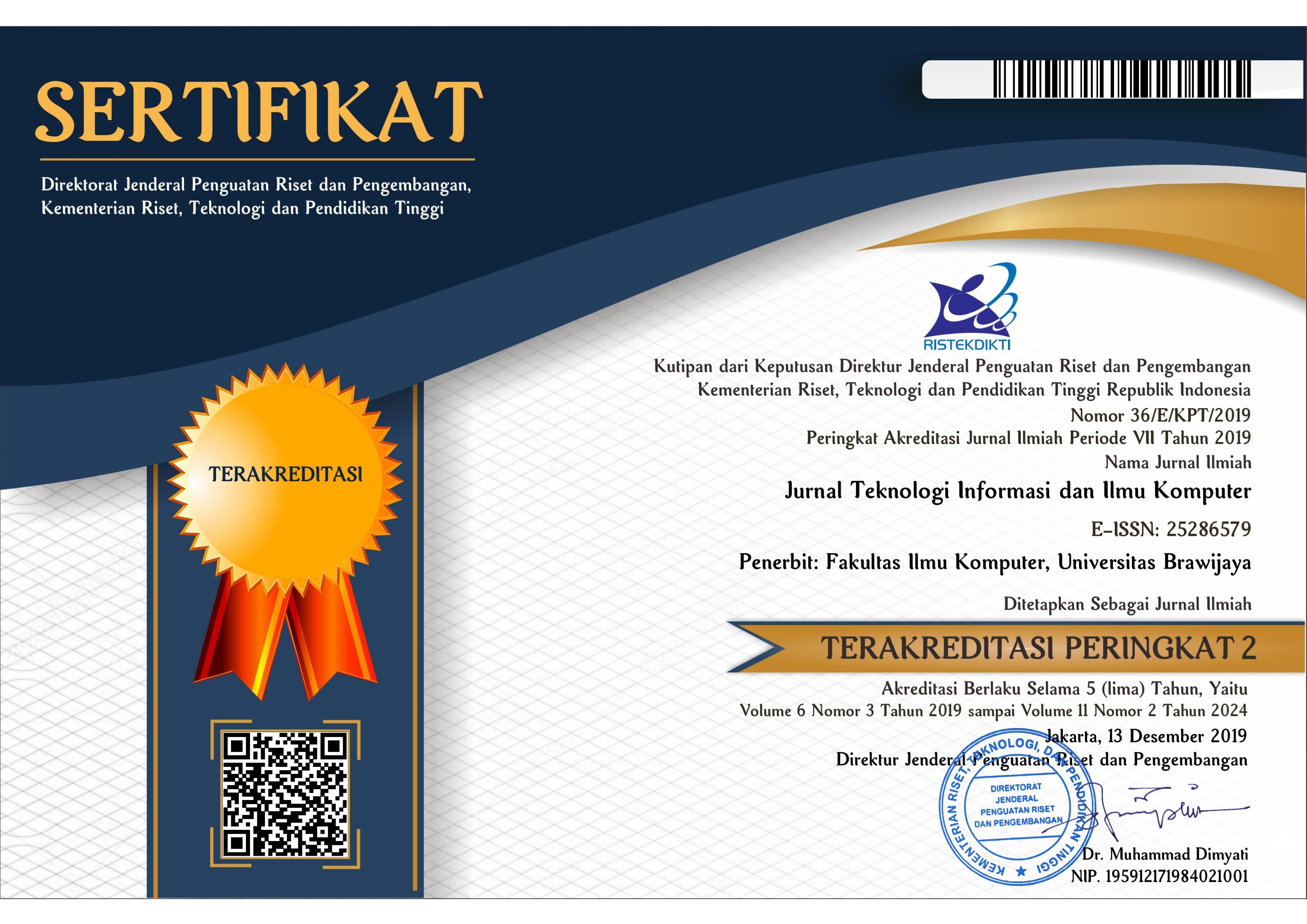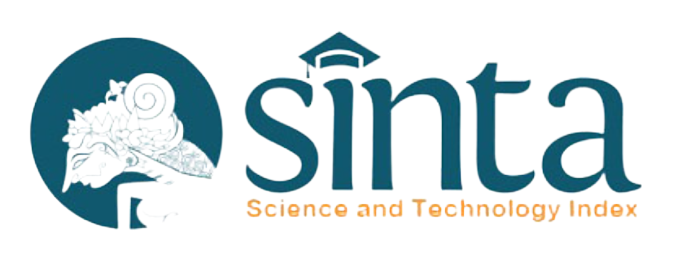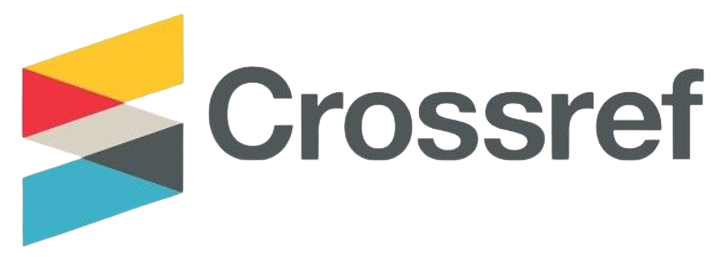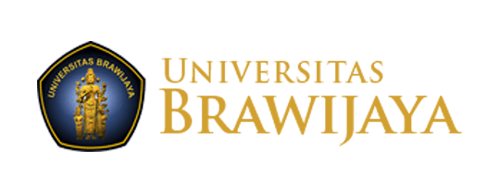Optimasi Klasifikasi Gaya Belajar Mahasiswa Inklusif Berdasarkan Model VAK dengan Stratified Split dan Multilayer Perceptron
DOI:
https://doi.org/10.25126/jtiik.2025125Kata Kunci:
learning styles, stratified split, random forest, MLP, disability, e-learningAbstrak
Identifikasi gaya belajar mahasiswa dengan mempertimbangkan fitur disabilitas memiliki peran penting dalam menciptakan pengalaman belajar yang inklusif dan personal. Namun, ketidakseimbangan data dalam kategori gaya belajar dan disabilitas menimbulkan tantangan yang signifikan bagi model klasifikasi. Penelitian ini bertujuan mengatasi tantangan tersebut dengan menerapkan teknik stratified split untuk menjaga keseimbangan distribusi kelas, khususnya pada variabel disabilitas dan gaya belajar. Algoritma Random Forest dan Multilayer Perceptron (MLP) digunakan untuk mengklasifikasikan gaya belajar mahasiswa berdasarkan model Visual, Auditory, dan Kinesthetic (VAK). Data yang digunakan berasal dari Open University Learning Analytics Dataset (OULAD), yang diproses melalui penggabungan data, pengkodean label, dan transformasi fitur untuk meningkatkan kinerja model. Evaluasi model dilakukan menggunakan metrik akurasi, presisi, recall, dan F1-score. Hasil penelitian menunjukkan bahwa model MLP mencapai kinerja sempurna dengan skor 100% pada semua metrik, sementara Random Forest menunjukkan performa sangat baik dengan skor 99%. Implementasi stratified split terbukti efektif dalam menjaga keseimbangan distribusi data, memastikan representasi yang memadai untuk semua kelas, termasuk mahasiswa dengan disabilitas. Penelitian ini memberikan kontribusi penting dalam mengembangkan model klasifikasi gaya belajar yang lebih akurat dan mendukung pendekatan pembelajaran yang lebih inklusif.
Abstract
Identifying students' learning styles by considering disability features plays an important role in creating an inclusive and personalized learning experience. However, the imbalance of data in learning style and disability categories poses significant challenges for classification models. This research aims to overcome these challenges by applying a stratified split technique to maintain a balanced class distribution, especially in the disability and learning style variables. Random Forest and Multilayer Perceptron (MLP) algorithms are used to classify student learning styles based on the Visual, Auditory, and Kinesthetic (VAK) model. The data used comes from the Open University Learning Analytics Dataset (OULAD), which is processed through data merging, label coding, and feature transformation to improve model performance. Model evaluation was conducted using accuracy, precision, recall, and F1-score metrics. The results showed that the MLP model achieved perfect performance with a score of 100% on all metrics, while Random Forest showed excellent performance with a score of 99%. The implementation of stratified split proved effective in maintaining the balance of data distribution, ensuring adequate representation for all classes, including students with disabilities. This research makes an important contribution in developing more accurate learning style classification models and supporting more inclusive learning approaches.
Downloads
Referensi
AKBAR, R. R., & NASUTION, E. S. 2021. Correlation learning style with grade point average fourth year medical student. Open Access Macedonian Journal of Medical Sciences, 9(T3), 358–361. https://doi.org/10.3889/oamjms.2021.7728
CHILDS-KEAN, L., MLIS, M. E. E., & SMITH, M. D. 2020. Use of learning style frameworks in health science education. In American Journal of Pharmaceutical Education (Vol. 84, Issue 7, pp. 1–9). American Association of Colleges of Pharmacy. https://doi.org/10.5688/ajpe7885
COTRIM, L. P., BARREIRA, R. A., SANTOS, I. H. F., GOMI, E. S., COSTA, A. H. R., & TANNURI, E. A. 2022. Neural Network Meta-Models for FPSO Motion Prediction from Environmental Data with Different Platform Loads. IEEE Access, 10, 86558–86577. https://doi.org/10.1109/ACCESS.2022.3199009
DAHLIANA, L. H., JAELANI, A., & ROKHMAH, U. N. 2023. The impact of the visual, auditory, and kinesthetic model on motivation and learning outcomes of Islamic Elementary School students. Journal of Integrated Elementary Education, 3(2), 150–163. https://doi.org/10.21580/jieed.v3i2.16867
DESIANI, A., DEWI, N. R., FAUZA, A. N., RACHMATULLAH, N., ARHAMI, M., & NAWAWI, M. 2021. Handling Missing Data Using Combination of Deletion Technique, Mean, Mode and Artificial Neural Network Imputation for Heart Disease Dataset. In Science and Technology Indonesia (Vol. 6, Issue 4). https://doi.org/11.26554/sti.2221.6.4.333-312
DESTRIANI, R., SETIYADI, B., LAMPUNG, U., SUMANTRI BROJONEGORO, J., & LAMPUNG CORESPONDENCE, B. 2021. The comparative study in reading comprehension achievement on students with visual, auditory, and kinesthetic learning styles (Vol. 10, Issue 2).
DEVY, N. K., HALIM, A., SYUKRI, M., YUSRIZAL, Y., NUR, S., KHALDUN, I., & SAMINAN, S. 2022. Analysis of Understanding Physics Concepts in terms of Students’ Learning Styles and Thinking Styles. Jurnal Penelitian Pendidikan IPA, 8(4), 2231–2237. https://doi.org/10.29303/jppipa.v8i4.1926
GOMEDE, E., DE BARROS, R. M., & DE SOUZA MENDES, L. 2020. Use of deep multi-target prediction to identify learning styles. Applied Sciences (Switzerland), 10(5). https://doi.org/10.3390/app10051756
HASSANZADEH, S., MOONAGHI, H. K., DERAKHSHAN, A., HOSSEINI, S. M., & TAGHIPOUR, A. 2019. Preferred learning styles among ophthalmology residents: An iranian sample. Journal of Ophthalmic and Vision Research, 14(4), 483–490. https://doi.org/10.18502/jovr.v14i4.5457
HIDAYATI, E. N., HIDAYAT, A., & UKIT, U. 2021. Relationship Between Learning Style With Student Learning Outcomes on Structure and Function of Plants. Pedagonal : Jurnal Ilmiah Pendidikan, 5(2), 94–105. https://doi.org/10.33751/pedagonal.v5i2.3794
IRMANDA, H. N., SANTONI, M. M., & ASTRIRATMA, R. (n.d.). Cased Based Reasoning untuk Menentukan Gaya Belajar Mahasiswa.
JURCZYK, A., SZTURC, J., OTOP, I., OŚRÓDKA, K., & STRUZIK, P. 2020. Quality-based combination of multi-source precipitation data. Remote Sensing, 12(11). https://doi.org/10.3390/rs12111709
KAUR, P., & KUMAR, R. (n.d.). Wireless Capsule Endoscopy Video Summarization using Transfer Learning and Random Forests. In IJACSA) International Journal of Advanced Computer Science and Applications (Vol. 14, Issue 9). www.ijacsa.thesai.org
KOMPUTER, D. S., & INFORMASI, F. T. 2020. Perbandingan Kinerja Algoritma untuk Prediksi Penyakit Jantung dengan Teknik Data Mining. In Journal of Applied Informatics and Computing (JAIC) (Vol. 4, Issue 1). http://jurnal.polibatam.ac.id/index.php/JAIC
MAULANA BAIHAQI, W., EKO SAPUTRO, R., & SETYO UTOMO, F. 2024. Novel Predictive Framework for Student Learning Styles Based on Felder-Silverman and Machine Learning Model. Journal of Applied Data Sciences, 5(4), 1726–1737. https://doi.org/10.47738/jads.v5i4.408
NORINDER, U. 2023. Traditional Machine and Deep Learning for Predicting Toxicity Endpoints. Molecules, 28(1). https://doi.org/10.3390/molecules28010217
NYOMAN PARDOMUAN, G., NYOMAN PARWATI, N., & AGUSTINI, K. 2020. Sistem Personalisasi E-Learning Berorientasi Felder Silverman Learning Style Model Pada Mata Pelajaran Teknik Pengambilan Gambar. In Jurnal EDUTECH Universitas Pendidikan Ganesha (Vol. 8, Issue 1). https://ejournal.undiksha.ac.id/index.php/JEU
ÖZDEMIR, A., YAVUZ, U., & DAEL, F. A. 2019. Performance evaluation of different classification techniques using different datasets. International Journal of Electrical and Computer Engineering, 9(5), 3584–3590. https://doi.org/10.11591/ijece.v9i5.pp3584-3590
RASHAD SAYED, A., HELMY KHAFAGY, M., ALI, M., & HUSSIEN MOHAMED, M. 2024. Predict student learning styles and suitable assessment methods using click stream. Egyptian Informatics Journal, 26. https://doi.org/10.1016/j.eij.2024.100469
SATHE, M. T., & ADAMUTHE, A. C. 2021a. Comparative study of supervised algorithms for prediction of students’ performance. International Journal of Modern Education and Computer Science, 13(1), 1–21. https://doi.org/10.5815/ijmecs.2021.01.01
SATHE, M. T., & ADAMUTHE, A. C. 2021b. Comparative study of supervised algorithms for prediction of students’ performance. International Journal of Modern Education and Computer Science, 13(1), 1–21. https://doi.org/10.5815/ijmecs.2021.01.01
SINGH, V., PENCINA, M., EINSTEIN, A. J., LIANG, J. X., BERMAN, D. S., & SLOMKA, P. 2021. Impact of train/test sample regimen on performance estimate stability of machine learning in cardiovascular imaging. Scientific Reports, 11(1). https://doi.org/10.1038/s41598-021-93651-5
SUBRAMANIAM, G., SAFARI BIN JAAFAR, M., & BINTI SAPRI, R. 2023. Exploring Learning Style and Learning Outcome of Students at Polytechnic Sultan Idris Shah. International Journal of Academic Research in Progressive Education and Development, 12(3). https://doi.org/10.6007/ijarped/v12-i3/19287
SUSANTI, E., ISMET, & WIYONO, K. 2023. Analysis of Student Learning Style Profiles to Support Learning in class VII of SMP Negeri 01 Jaya Pura. Jurnal Penelitian Pendidikan IPA, 9(12), 10650–10655. https://doi.org/10.29303/jppipa.v9i12.5858
SYARIFUDDIN, M., HADI WIJOYO, S., SUKMO WARDHONO, W., Studi Pendidikan
Teknologi Informasi, P., Ilmu Komputer, F., Brawijaya Jl Veteran, U., Lowokwaru, K., Malang, K., & Timur, J. (n.d.). Pengaruh Online Learning Experience Dan Gaya Belajar Terhadap Motivasi Belajar Peserta Didik SMKN 2 Malang Saat Pembelajaran Jarak Jauh (PJJ).
VAN KESSEL, R., WALSH, S., RUIGROK, A. N. V., HOLT, R., YLIHERVA, A., KÄRNÄ, E., MOILANEN, I., HJÖRNE, E., JOHANSSON, S. T., SCHENDEL, D., PEDERSEN, L., JØRGENSEN, M., BRAYNE, C., BARON-COHEN, S., & ROMAN-URRESTARAZU, A. 2019. Autism and the right to education in the EU: Policy mapping and scoping review of Nordic countries Denmark, Finland, and Sweden. Molecular Autism, 10(1). https://doi.org/10.1186/s13229-019-0290-4
ZHANG, J., QIU, F., WU, W., WANG, J., LI, R., GUAN, M., & HUANG, J. 2023. E-Learning Behavior Categories and Influencing Factors of STEM Courses: A Case Study of the Open University Learning Analysis Dataset (OULAD). Sustainability (Switzerland), 15(10). https://doi.org/10.3390/su15108235
Unduhan
Diterbitkan
Terbitan
Bagian
Lisensi
Hak Cipta (c) 2025 Jurnal Teknologi Informasi dan Ilmu Komputer

Artikel ini berlisensiCreative Commons Attribution-ShareAlike 4.0 International License.

Artikel ini berlisensi Creative Common Attribution-ShareAlike 4.0 International (CC BY-SA 4.0)
Penulis yang menerbitkan di jurnal ini menyetujui ketentuan berikut:
- Penulis menyimpan hak cipta dan memberikan jurnal hak penerbitan pertama naskah secara simultan dengan lisensi di bawah Creative Common Attribution-ShareAlike 4.0 International (CC BY-SA 4.0) yang mengizinkan orang lain untuk berbagi pekerjaan dengan sebuah pernyataan kepenulisan pekerjaan dan penerbitan awal di jurnal ini.
- Penulis bisa memasukkan ke dalam penyusunan kontraktual tambahan terpisah untuk distribusi non ekslusif versi kaya terbitan jurnal (contoh: mempostingnya ke repositori institusional atau menerbitkannya dalam sebuah buku), dengan pengakuan penerbitan awalnya di jurnal ini.
- Penulis diizinkan dan didorong untuk mem-posting karya mereka online (contoh: di repositori institusional atau di website mereka) sebelum dan selama proses penyerahan, karena dapat mengarahkan ke pertukaran produktif, seperti halnya sitiran yang lebih awal dan lebih hebat dari karya yang diterbitkan. (Lihat Efek Akses Terbuka).

